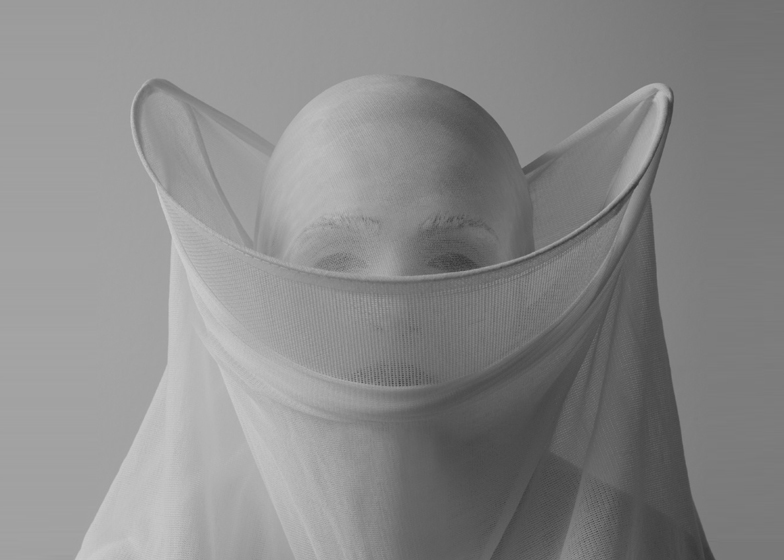Mesh cloaks and structured veils in this fashion collection by Nicolas Alan Cope and Dustin Edward Arnold conjure ghostly apparitions.
White buckram, a thick mesh cloth made from cotton, is pulled taut around stiff wire structures to create circular headdresses.
These shapes cover and frame different areas of the face and head, then are left to drape down to the floor. "We were sure to begin with materials that had enough tensile strength to be both pliable and hold shape," Arnold told Dezeen.
Items cloak the wearer from top to toe, the matte white mesh creating blurred silhouettes of the body beneath the layers of fabric. "We wanted to restrain the palette by focusing entirely on form rather than color," he said.
A cape-like garment with a thick, rigid collar spirals around the body in semi-translucent layers.
Los Angeles design duo Cope and Arnold cited their influence as De Revolutionibus Orbium Coelestium, Copernicus' 16th century scientific document that denounced the Earth as the centre of the universe.
"It signified a paradigm shift in how humanity views itself in relationship to the rest of the world," Arnold said. "This flew in the face of accepted doctrine and assumptions that were theological in nature."
Vedas means knowledge in Sanskrit and the duo designed the collection to challenge ideas of what is acceptable against what is possible.
"It was the idea that knowledge is at once both expansive and contractive," said Arnold. "For some it shakes foundations, de-stabilizes values and opens up the sheer terror of possibility. For others it signifies hope, advancement and discovery."
Recent sculptural fashion we've featured includes garments inspired by gothic architecture and a collection accessorised with concrete cuffs.

